The female face of Belarusian protests: How women rose against Lukashenko
Staring down a masked man with a rifle, standing alongside dozens of other women all linking arms in solidarity, Anastasiya Antoniuk was prepared to be taken to jail.
The 26-year-old copywriter was taking part in a protest against the detention of an opposition leader, one of many demonstrations since Belarus’ authoritarian leader, Alexander Lukashenko, was named the winner of a contested election on Aug. 9.
In a photo of the incident that has garnered international attention, Antoniuk can be seen standing in the first row, in a brown coat, defiant.
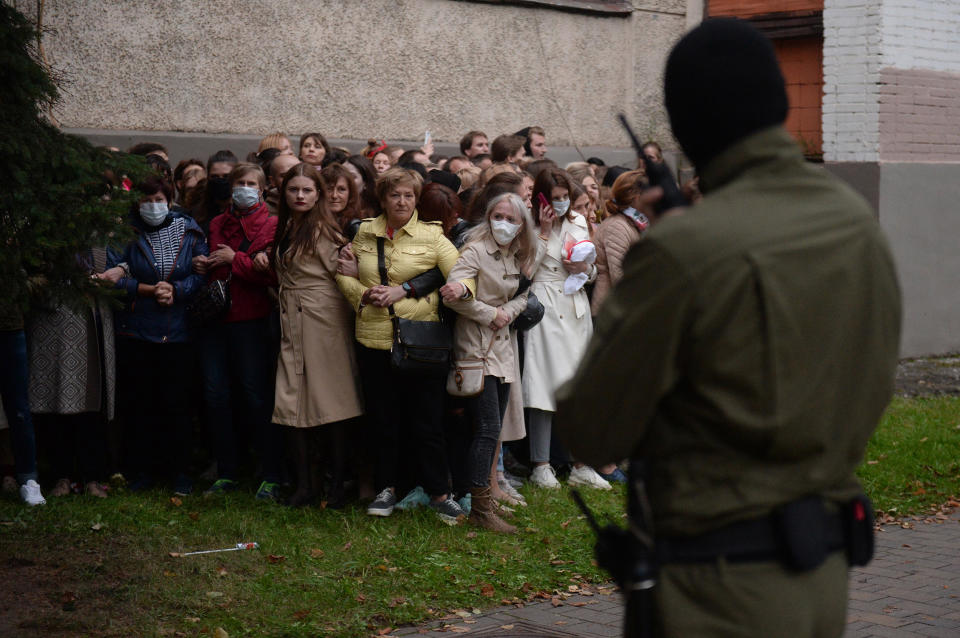
A compelling and unavoidable theme of Belarus’ popular protest movement calling for the removal of Lukashenko, now into its sixth week, is the central role played by women.
From the weekly protests to the leaders organizing and calling for change, women have had a strong presence.
The photo shows Antoniuk and other women shielding some men behind their backs while linking arms — they hoped the security forces would remain lenient toward women. But unable to get to the men, Antoniuk said riot police and unidentified men wearing fatigues and balaclavas started detaining everyone.
“Now it doesn’t matter whether you are a woman or man, young or old,” she said. “Some of them laughed in our faces when we asked them to stop and show some mercy.”
Standing in the front row, Antoniuk said she was prepared to be detained because she can no longer live under Lukashenko’s government. “There is nothing to lose,” she said.
With protests carrying on, Antoniuk struggled to say how long the political crisis might take to resolve.
“I don’t think protests will stop, because there is nowhere for us to retreat to,” she said. “Too much strength and resources were thrown by Belarusians at these protests. I don’t think people will give up easily.”
Weeks ahead of the disputed election and protests that have roiled the nation, three women, all political novices, galvanized the public after all high-profile opposition male candidates were barred from running.
A now iconic image of the three posing with their campaign gestures — Svetlana Tsikhanouskaya with a clenched fist, Maria Kolesnikova with a heart shape and Veronika Tsepkalo with a V-sign — quickly spread.
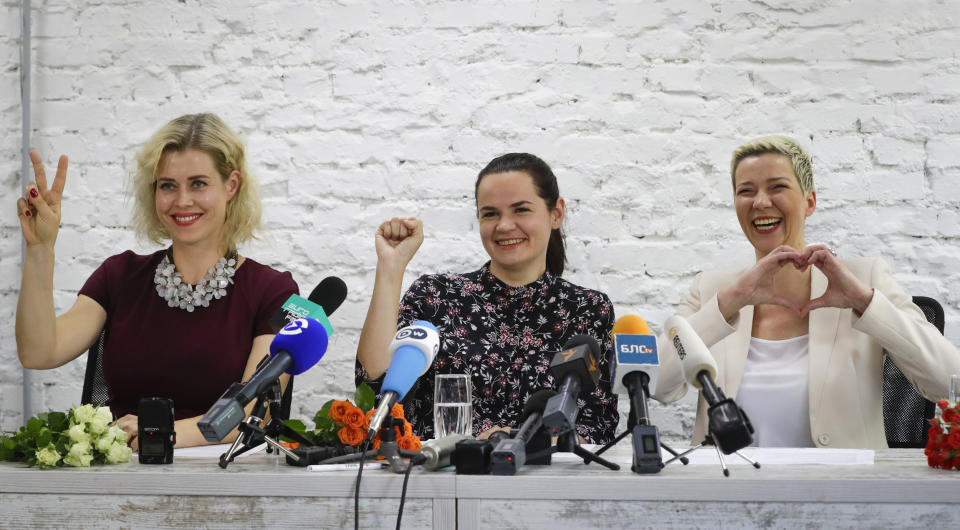
In the run-up to the vote, they criss-crossed the country, their rallies attracting tens of thousands of people and taking authorities by surprise.
Tsikanouskaya registered as a presidential candidate after her husband, political blogger Sergei Tsikhanouskiy, was jailed.
She ran and lost to Lukashenko, although many consider her to be the legitimate winner, accusing the incumbent of rigging the results.
Lukashenko’s victory outraged thousands, making them take to the streets, only to be met by a violent crackdown.
Horrified by the violence, thousands of women wearing all white, carrying flowers and linking arms in so-called “solidarity chains” came out to defy the crackdown.
Every Saturday since, there has been a peaceful women’s march, with thousands of women attending, condemning violence and urging Lukashenko to step down.
Earlier this month, the United Nations’ women’s rights committee hailed Belarusian women for their role in the political process and protests, saying their voices were not marginal, but central.
“It’s widely recognized that the continuing fight for democracy in Belarus has a female face,” the committee said in a statement.
Download the NBC News app for breaking news and politics
Protester Hanna Mirochnik told NBC News that although there is a female presence in the country’s government, women have never before been the face of the protest.
“But now, girls who have never been to a protest in their life, who have always been apolitical have suddenly understood that they can make history and change something,” Mirochnik, 32, said.
Mirochnik, who has attended numerous protests — including women’s marches — since the disputed election, said the female trio of Tsikhanouskaya, Tsepkalo and Kolensikova has opened many women’s eyes to the possibility of a woman calling the shots in high-level politics.
“It was unprecedented for Belarus,” she said.
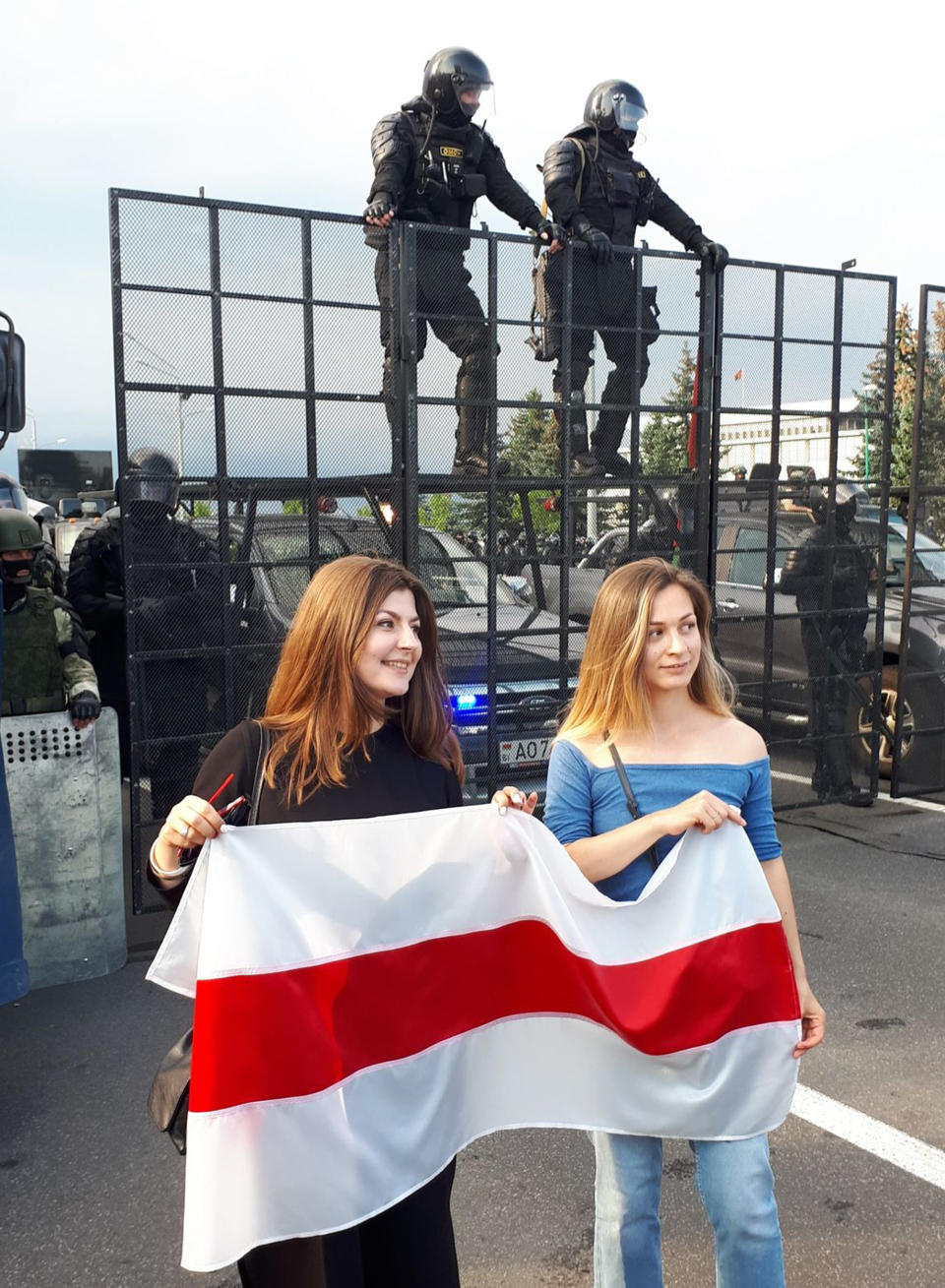
“Each of them targeted her own audience,” Mirochnik, who works in public relations, added. “Tsikhanouskaya had an understandable narrative as a woman following her husband. She was close to your average woman. Maria Kolesnikova was a perfect image for the new elites. She has European education and elegance. And Veronika Tsepkalo, a female manager, was a woman of few words, but very targeted rhetoric.”
Lukashenko’s patriarchal rhetoric about women has angered many women, Mirochnik added.
Ahead of the election, the president said the country’s constitution was “not meant” for a woman. He later clarified it doesn’t mean he doesn’t respect women, but that “the poor things” would “collapse” under the weight of presidential duties.
“That dismissive rhetoric, that slap on the face was a real gift to the united female campaign,” Mirochnik said.
From the original female trio of opposition leaders only Kolesnikova has remained in Belarus. Tsikhanouskaya and Tsepkalo both fled the country citing safety concerns.
Last week, Kolesnikova’s aides said Belarusian authorities tried to forcibly expel her from the country, but she thwarted their plans by ripping up her passport. She was detained and has since been charged with undermining national security.
Her bold move and refusal to leave the country have cemented the 38-year-old musician-turned-politician’s status as a protest leader.
Kolesnikova, with her signature bleached blonde hair and red lipstick, has walked alongside protesters in rallies, boldly approaching riot police, demanding that mass detentions stop.
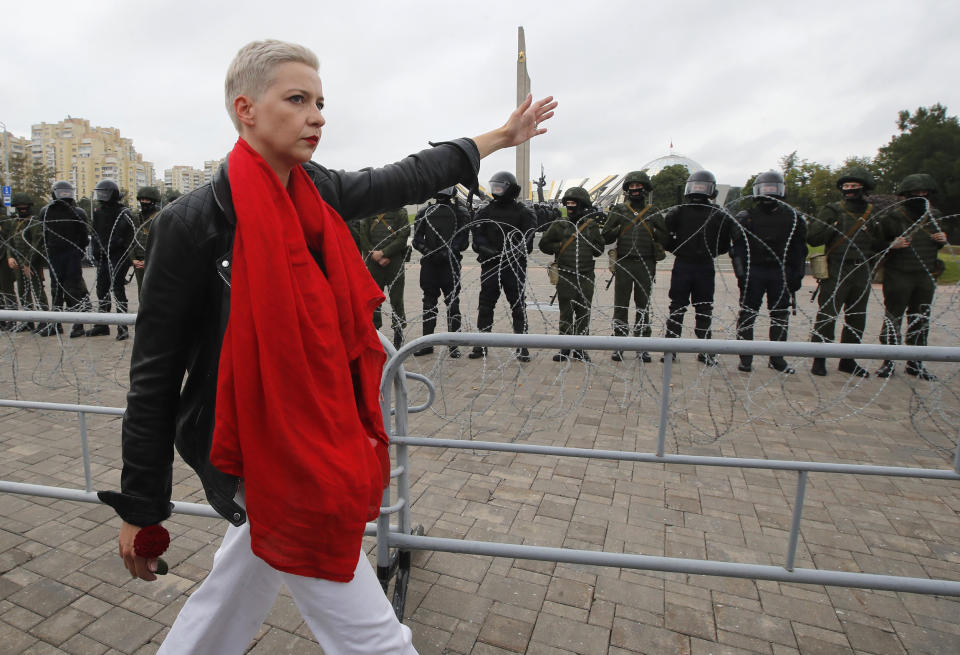
Mirochnik said while she thinks Kolesnikova's arrest will not slow down the protests, people have taken her detention as "a personal insult."
"It has turned people angrier," she said. "It has increased their motivation to self-organize better."
She is just one of thousands of people to be detained and thrown behind bars, where they complained of beatings and mistreatment.
Amid international outrage, the police and security forces have continued detaining protesters as the demonstrations carried on, but police have targeted mostly men, avoiding altercations with women — at least in front of the cameras.
Videos circulating on social media showed Belarusian women shielding men to protect them from getting detained — often kicking, screaming and, in some cases, trying to tear balaclavas off security officers, all while documenting police brutality from up close.
But as Lukashenko struggles to quash the unrest, it appears the government is changing its tactic — cracking down on female protesters.
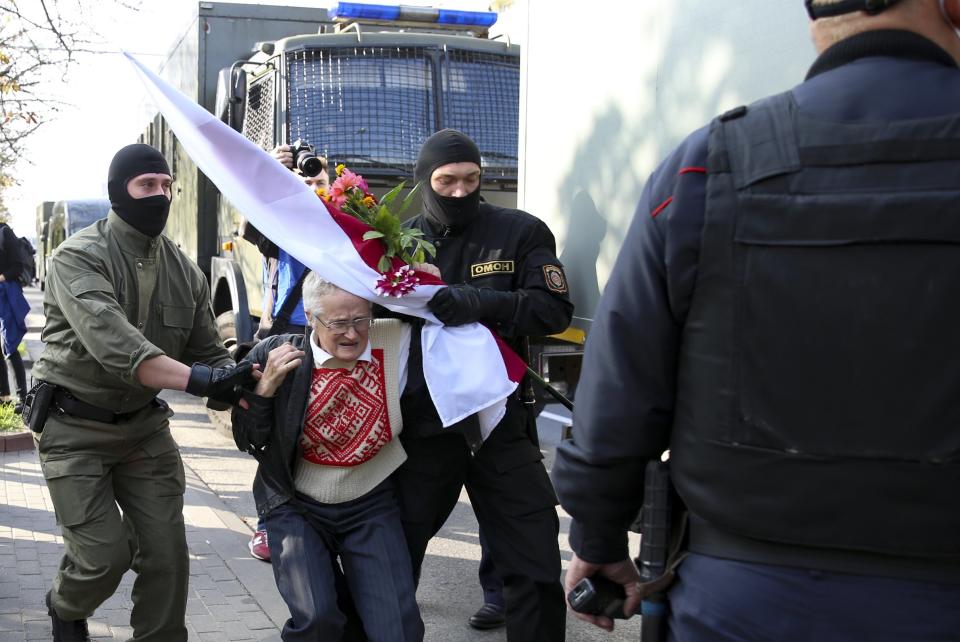
On Saturday, police cracked down sharply on a women’s protest march, arresting nearly 400 people, according to Belarusian human rights organization Viasna.
Among the detained was Nina Bahinskaya, a 73-year-old pensioner who has become one of the most recognizable faces of the protests.
The bespectacled pensioner with a boyish haircut has been attending rallies, walking around with a giant version of the country’s historical red-and-white flag and fearlessly engaging with riot police and security officers.
After she was filmed telling a police officer "I am just out for a walk," many protesters adopted the slogan.
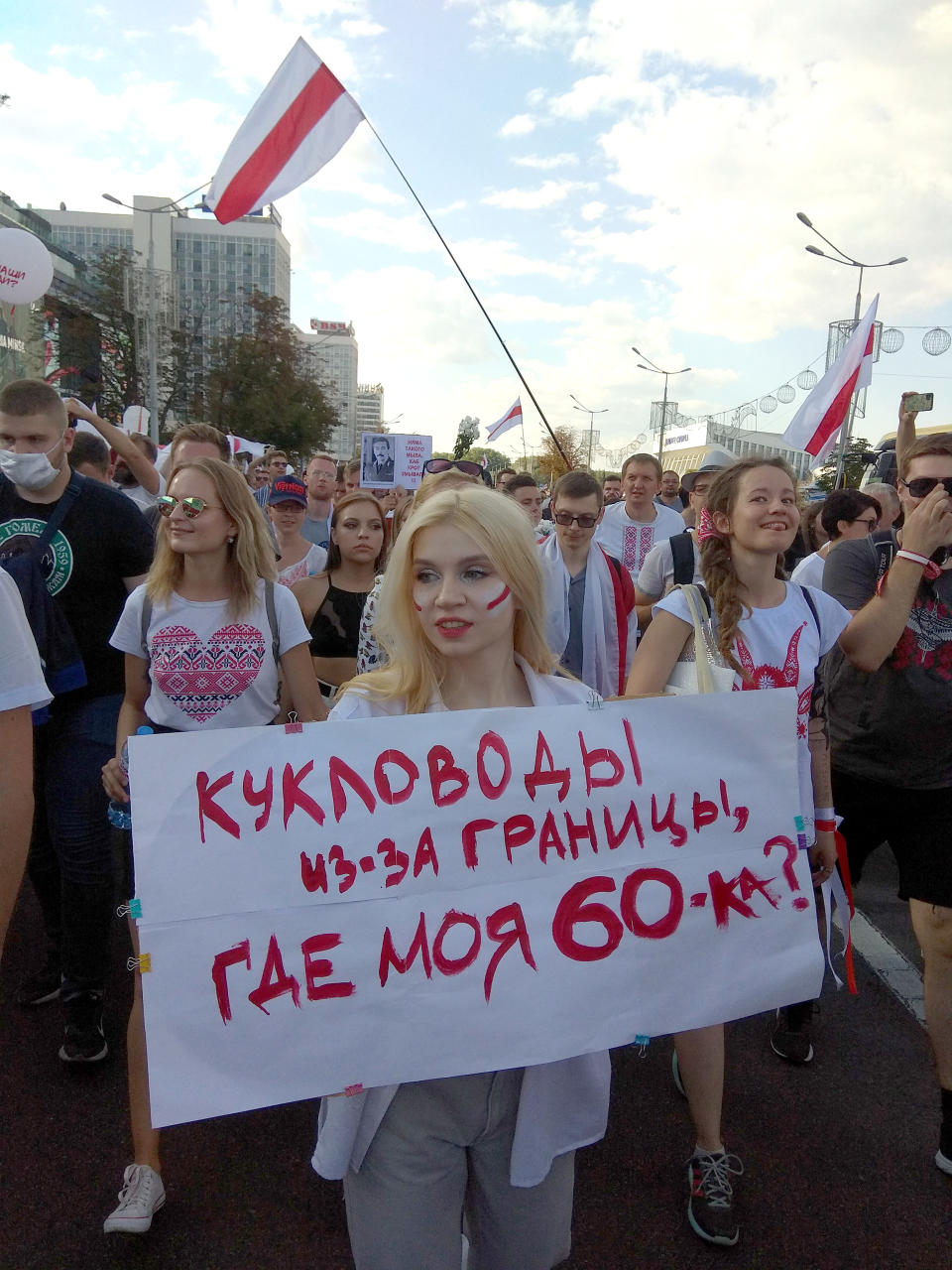
But despite increasing detentions, many women are choosing to press on.
Asya Ilnitskaya said the increasing crackdown on female protesters will not deter her from attending more demonstrations.
“I don’t know if I feel fear anymore. It’s more like desperation,” Ilnitskaya, 25, a social media manager, said.
She has protested since the election night on Aug. 9, managing to avoid detention after hiding from riot police in a car wash, and has carried on ever since.
“Because you either sit at home, shaking, calling everyone and trying to help, or you are on the barricades, so to speak. It’s equally unnerving and scary," Ilnitskaya said.
"We don’t have fear, we just don’t have a choice," she added.

